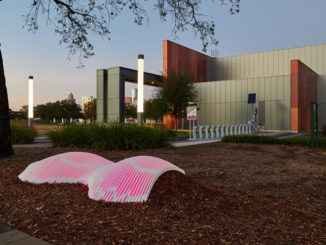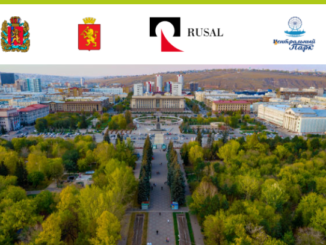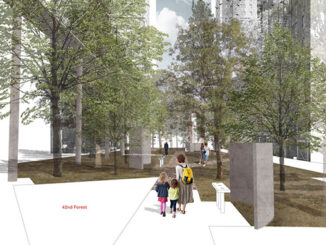One Central Greenway: A unified vision for the Olentangy and Scioto River corridors and adjacent neighborhoods, striving for a more equitable and livable future where all Central Ohioans have safe, easy access to places that uplift them and improve their well-being.
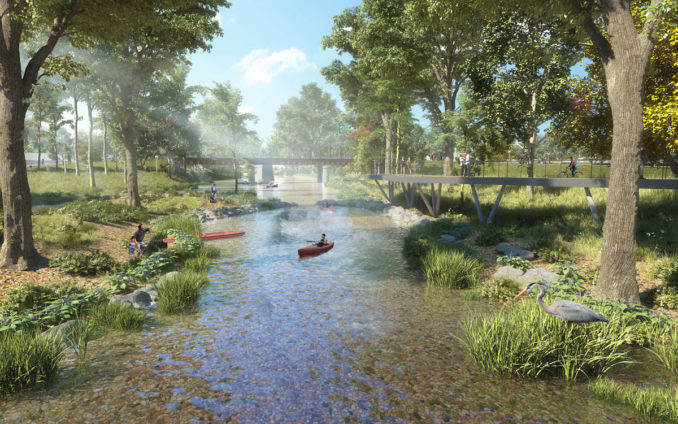
In April 2021, ULI Columbus, in partnership with the Mid-Ohio Regional Planning Commission (MORPC), embarked on a visioning exercise to re-imagine the five river corridors in Central Ohio, identified as part of the RAPID 5 project. The intent of this effort is re-frame the connectivity of the region based on the natural geography of our waterways, with the goal of connecting all Franklin County residents to the region’s natural resources.
MKSK was selected to develop a vision for the Olentangy River Corridor. As the most centrally located of these waterways, the Olentangy River Corridor serves as the main geographic spine of the system. It also functions as the center of activity for the area, as it is connected to a substantial portion of the region’s population, major institutions, employment centers, and other amenities.
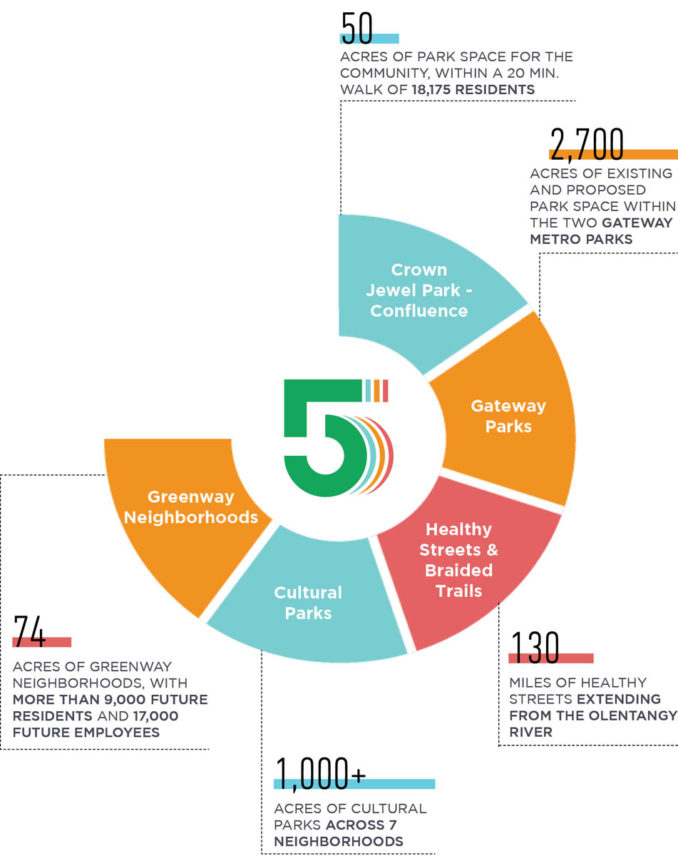
Our vision for the Olentangy River Corridor is grounded in five key pillars:
Pillar 1: Equity + Inclusion
The Olentangy River Corridor should be a communal space that is welcoming and accessible for people of all backgrounds, ages, and abilities. Residents from low opportunity areas need to know that this is their river. Strong connections should be made to the surrounding neighborhoods to connect people to our natural resources for recreation, enjoyment, and mobility.
Pillar 2: Activation + Recreation
The corridor should provide a breadth of experiences that meet the health, wellness, social, and cultural needs of the community through active and passive recreation. Activities and programs should reflect the distinctive neighborhood characters and historical attributes of the corridor.
Pillar 3: Connectivity + Mobility
Facilitate a more connected community through an integrated multi-modal network of trails, bike facilities, transit routes, and vehicle connections that utilize the north-south Olentangy River Corridor. Improve access and safety throughout the corridor transportation network. Expand east-west linkages from the river corridor. Create opportunities for transit-supportive development.
Pillar 4: Lifelong Learning
The river and its environs should create ample opportunities for learning and curiosity. Programming along the corridor should be engaging for all generations and inspire environmental stewardship.
Pillar 5: Ecology
A restorative approach should be taken to maximize the ecological healing of the riparian ecosystem and surrounding ecology. Examine how to use the river to advance environmental sustainability and to mitigate the negative impacts of climate change.
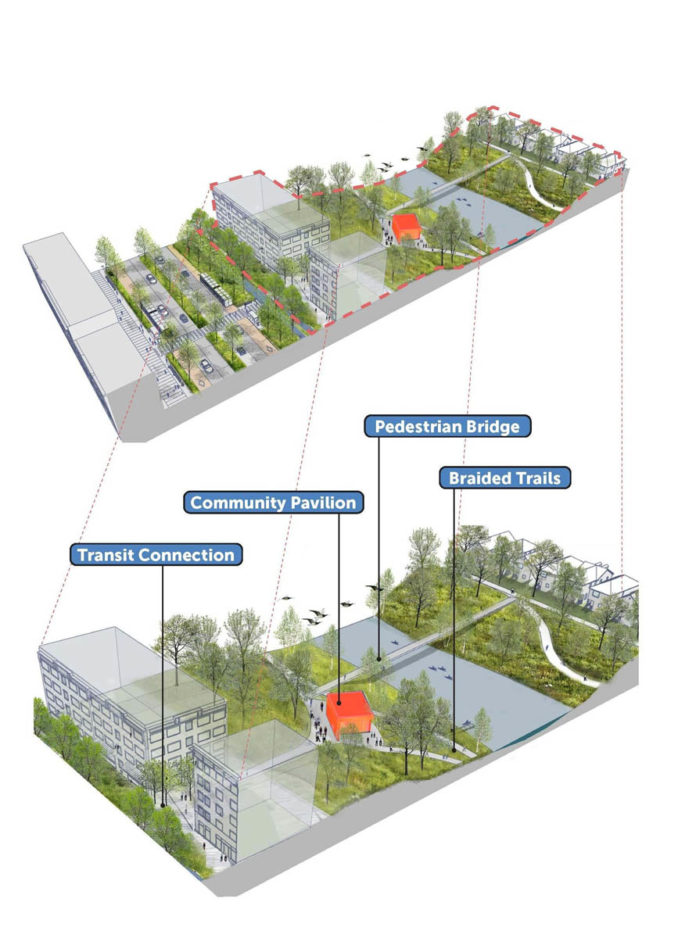
Our Approach: 15 Pulse Points
Along the Olentangy River Corridor, the MKSK team identified fifteen pulse points, which are existing and potential activity sites that require renewed thought around their program and design. The locations of the pulse points maximize the potential community impact of these sites and create needed neighborhood amenities, with the goal of creating a pulse point for every neighborhood along the corridor. These pulse points serve as a central junction from which east-west green streets comprised of pedestrian, bike, and transit links, connecting to the Scioto River and Alum Creek corridors.
Pulse Point Case Study: Antrim
Expanding Antrim Park’s path systems and allowing more access to and across the Olentangy River, will improve the overall park experience. By expanding and reshaping the existing fish and wildlife habitats, we can promote plant and animal diversity along the corridor.
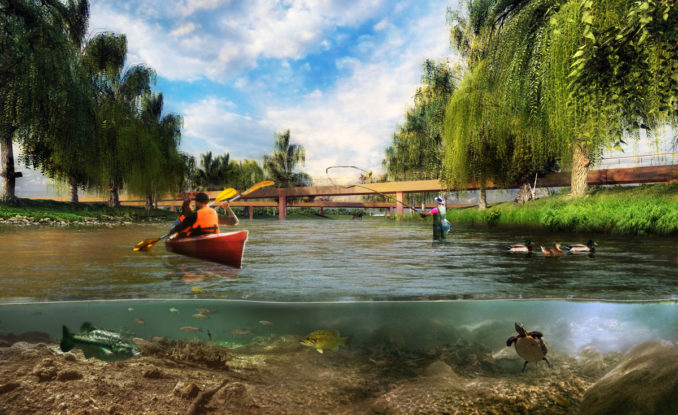
Pulse Point Case Study: Bethel
The Bethel Road corridor has a diverse population, with many different races and ethnicities represented. To celebrate the diverse community fabric, we’ll create a cultural gathering place by expanding the existing Recreation Center into a Community Center; along with creating cultural gardens for events, such as farmers markets and festivals.
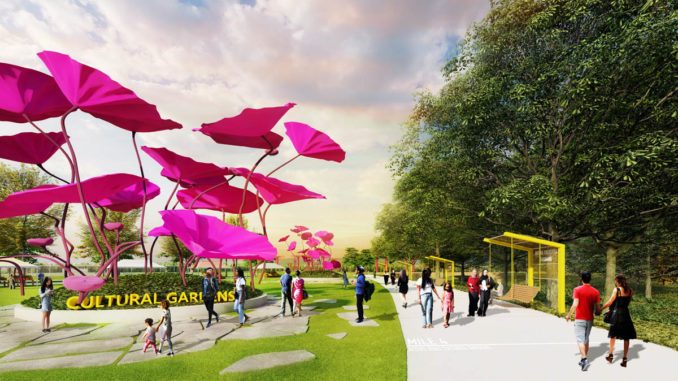
Pulse Point Case Study: Riverside
The existing job hub of the Ohio Health Campus and Riverside Methodist Hospital is supplemented to develop a complete riverfront neighborhood. The density of the development allows for some park space on-site, while a new riverfront park on the west side of the Olentangy River and easy connections across the river to Clinton-Como Park provide ample green space for existing and future residents and workers to enjoy.
Pulse Point Case Study: Hudson
The Hudson and OSU learning lab features a large playscape with regional appeal for all ages. An exciting adventure park and festival lawn will accompany a rock-climbing wall, multi-season garden, river overlook, boat house, and community center as well as kayak launch points and river crossings. A new east-west connection along Hudson Street will connect the new Hudson Adventure Park to Mock Park in Linden, making active transportation more accessible for the residents in between.
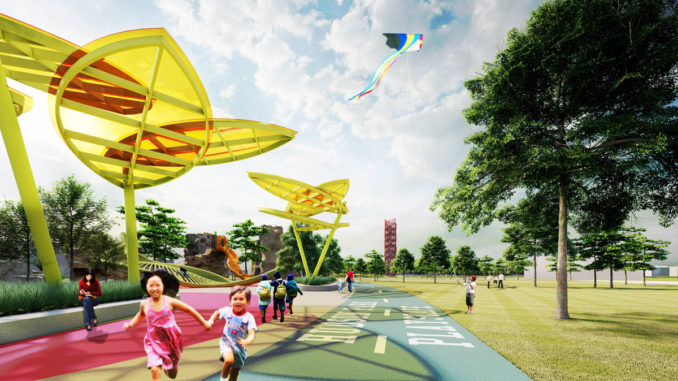
Pulse Point Case Study: Scioto Mile
At the Scioto Mile, there’s an opportunity to further activate the urban riverfront through the development of a local business and entrepreneurship hub where people can dine and shop right along the river. An urban beach acts as a backdrop for lounging, recreation, where people can enjoy stellar views of Downtown.
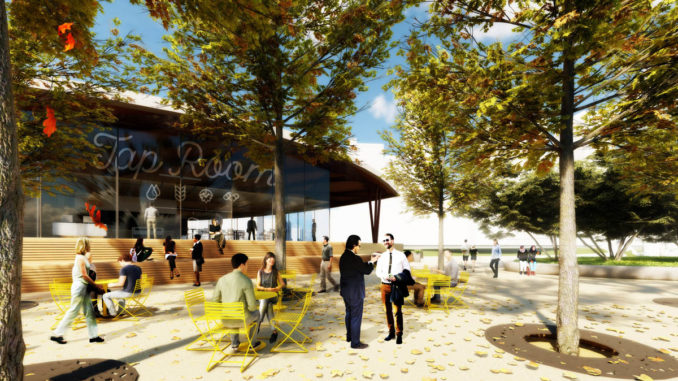
Pulse Point Case Study: Confluence
The central pulse point of the Olentangy River Corridor takes shape at Confluence Park, which is adjacent to existing neighborhoods as well as new development momentum. A sweeping circular pedestrian walkway, the “ONE Columbus” bridge, spans across the Olentangy and Scioto Rivers, providing spectacular views of the city. The new Confluence Park also extends south, creating frontage along Broad Street to serve as a neighborhood park and to directly connect Franklinton and Hilltop residents with the riverfront. It would be a hub for youth recreation, with an indoor fieldhouse and outdoor sports facilities.
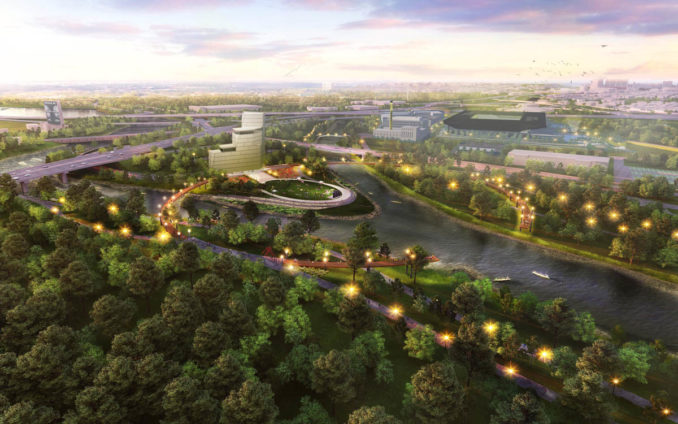
Outcomes of this Vision
The outcomes of the vision for the Olentangy River Corridor would be transformational for Central Ohio. It would give more residents access to parks and green space, create a more resilient ecology, provide space for well-being and culture, and result in new neighborhoods that prioritize transit and active recreation.
One Central Greenway
Location: Central Ohio, USA
Landscape Architect: MKSK
Image Credits: MKSK
Learn More: One Central Greenway: A Vision for the Olentangy River Corridor

